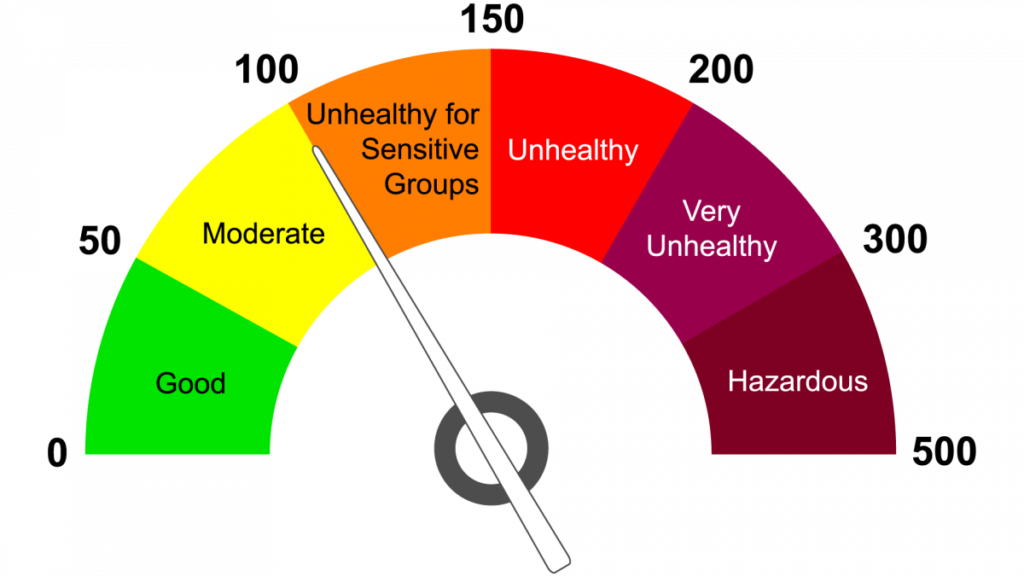
The Air Quality Index (AQI) has emerged as a crucial measure of environmental health, serving as an indicator of the pollution levels in the air we breathe. In recent years, the rising AQI levels in many cities across the globe have posed significant health risks, particularly to individuals with pre-existing cardiovascular conditions. Poor air quality not only exacerbates existing health issues but also contributes to the development of new cardiovascular diseases.
Understanding AQI and Its Components
The AQI measures pollutants like particulate matter (PM2.5 and PM10), nitrogen dioxide (NO2), sulfur dioxide (SO2), carbon monoxide (CO), and ground-level ozone (O3). Among these, fine particulate matter (PM2.5) is especially harmful as it can penetrate deep into the lungs and bloodstream, causing inflammation and oxidative stress.

Impact on Cardiovascular Health
Research indicates a strong correlation between elevated AQI levels and cardiovascular issues, including heart attacks, strokes, and arrhythmias. Here’s how poor air quality impacts individuals with cardiovascular diseases (CVDs):
- Increased Risk of Heart Attacks and Strokes
Exposure to high AQI levels triggers systemic inflammation and blood vessel dysfunction, increasing the likelihood of clot formation. This can lead to heart attacks and strokes, particularly in individuals already at risk due to hypertension or atherosclerosis. - Aggravation of Arrhythmias
Pollutants like PM2.5 and CO can disrupt the normal electrical activity of the heart, causing arrhythmias. Patients with pre-existing conditions like atrial fibrillation are particularly vulnerable to such disturbances. - Hypertension and Blood Vessel Damage
Air pollution often leads to oxidative stress, which damages blood vessels and elevates blood pressure. Over time, this can worsen conditions like coronary artery disease and increase the burden on the heart. - Reduced Oxygen Supply
High levels of CO in the air bind to hemoglobin in the blood, reducing its oxygen-carrying capacity. This is particularly harmful for individuals with congestive heart failure or ischemic heart disease, as it exacerbates oxygen deprivation in tissues.
Vulnerable Populations
Certain groups are more vulnerable to the cardiovascular effects of poor AQI, including:
Elderly individuals, whose immune systems are weaker and who are more likely to have pre-existing conditions.
Children, as their developing cardiovascular systems are more sensitive to environmental stressors.
Urban residents, who are exposed to higher pollution levels due to traffic and industrial emissions.
Preventive Measures
To mitigate the impact of AQI on cardiovascular health, individuals and governments must take proactive steps:
Personal Protection
Limit outdoor activities during high AQI days.
Use air purifiers indoors and wear N95 masks outdoors.
Lifestyle Changes
Maintain a heart-healthy diet rich in antioxidants.
Engage in regular, low-intensity exercise indoors when air quality is poor.
Policy Interventions
Enforce stricter emission norms for vehicles and industries.
Increase green cover in urban areas to improve air quality.
Promote the use of public transport and renewable energy sources.
Conclusion
The rising AQI levels are a silent but significant threat to global cardiovascular health. For individuals with existing cardiovascular diseases, the risks are heightened, making it imperative to prioritize both personal and public health measures. By addressing the root causes of air pollution and implementing robust health interventions, we can reduce the burden of cardiovascular diseases and ensure healthier, longer lives for all.










amoxicillin medication – cheap amoxicillin without prescription amoxicillin sale
oral amoxicillin – https://combamoxi.com/ amoxil generic
purchase forcan without prescription – this buy diflucan 100mg for sale
fluconazole 100mg for sale – https://gpdifluca.com/ fluconazole where to buy
lexapro canada – order escitalopram 10mg for sale buy lexapro 20mg generic
purchase cenforce without prescription – https://cenforcers.com/ generic cenforce 50mg
order cenforce 50mg without prescription – https://cenforcers.com/# buy cenforce 100mg for sale
cialis soft tabs canadian pharmacy – https://ciltadgn.com/ buy a kilo of tadalafil powder
cialis black 800 mg pill house – https://ciltadgn.com/ cialis 100mg from china
what possible side effect should a patient taking tadalafil report to a physician quizlet – tadalafil online canadian pharmacy cialis for enlarged prostate
cialis indications – https://strongtadafl.com/# can you drink wine or liquor if you took in tadalafil
how old do you have to be to buy viagra – https://strongvpls.com/# viagra buy london
herbal viagra sale ireland – https://strongvpls.com/ cheap viagra no prescription needed
This is the kind of writing I in fact appreciate. brand neurontin 100mg
More content pieces like this would insinuate the интернет better. https://gnolvade.com/
More posts like this would persuade the online space more useful. https://gnolvade.com/es/amoxicilina-online/
More content pieces like this would create the интернет better. prednisone steroid side effects
This is the make of delivery I recoup helpful. https://ursxdol.com/get-metformin-pills/
Greetings! Utter gainful advice within this article! It’s the petty changes which will turn the largest changes. Thanks a portion for sharing! https://ursxdol.com/cialis-tadalafil-20/
I couldn’t weather commenting. Warmly written! https://prohnrg.com/product/lisinopril-5-mg/
Thanks on putting this up. It’s understandably done. https://prohnrg.com/product/lisinopril-5-mg/
More delight pieces like this would urge the web better. https://aranitidine.com/fr/lasix_en_ligne_achat/
This is the tolerant of post I find helpful. https://aranitidine.com/fr/en_ligne_kamagra/
More posts like this would make the blogosphere more useful. https://ondactone.com/simvastatin/
The thoroughness in this section is noteworthy. https://ondactone.com/simvastatin/
The thoroughness in this draft is noteworthy.
how to buy meloxicam
More articles like this would remedy the blogosphere richer.
generic toradol
The reconditeness in this piece is exceptional. https://www.google.co.cr/url?q=https://schoolido.lu/user/adip/
This is a topic which is virtually to my callousness… Many thanks! Faithfully where can I find the contact details due to the fact that questions? https://myvisualdatabase.com/forum/profile.php?id=117930
The depth in this serving is exceptional. http://mi.minfish.com/home.php?mod=space&uid=1411820
order forxiga 10 mg generic – buy dapagliflozin 10mg online cheap cost dapagliflozin
buy orlistat paypal – https://asacostat.com/ xenical 60mg cost
purchase orlistat online cheap – janozin.com oral orlistat 60mg
The reconditeness in this ruined is exceptional. http://zqykj.com/bbs/home.php?mod=space&uid=303476
More posts like this would create the online time more useful. http://wightsupport.com/forum/member.php?action=profile&uid=22077
You can conserve yourself and your stock nearby being alert when buying medicine online. Some druggist’s websites manipulate legally and sell convenience, secretiveness, rate savings and safeguards over the extent of purchasing medicines. buy in TerbinaPharmacy https://terbinafines.com/product/zanaflex.html zanaflex
You can protect yourself and your family by way of being cautious when buying prescription online. Some pharmacopoeia websites operate legally and offer convenience, secretiveness, cost savings and safeguards for purchasing medicines. buy in TerbinaPharmacy https://terbinafines.com/product/zetia.html zetia
This website exceedingly has all of the tidings and facts I needed about this case and didn’t comprehend who to ask. TerbinaPharmacy
More delight pieces like this would create the web better. zoloft 100mg for sale
This is the kind of delivery I turn up helpful.
More posts like this would make the blogosphere more useful.